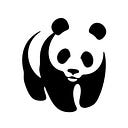Too many proposals, not enough action for elephants.
Co-authored by Margaret Kinnaird, WWF Wildlife Practice Leader and Michel Masozera, WWF Wildlife Practice Deputy.
Margaret Kinnaird: In 2014 an aerial assessment of Africa’s elephant populations, appropriately named The Great Elephant Census, showed a shocking decline in savanna elephants. In less than a decade, the continent’s population of elephants had declined by 30% to less than 400,000 individuals. That’s an average of 20–30,000 elephants killed annually for their ivory. I observed first-hand the devastation of elephants in the Tana River region of Kenya in the mid 1980’s as I fell asleep almost every night to the high-pitched screams as each bullet hit its mark. Although poaching has ebbed in some regions of Africa, most populations are far from secure. A recent seizure in Singapore of 9 tonnes of ivory destined for Vietnam clearly demonstrates the illicit trade in ivory is thriving.
The 18th Conference of the Parties (COP) of the Convention on International Trade in Endangered Species of Wild Fauna and Flora (CITES) is currently meeting in Geneva to consider, as part of a packed agenda of global species trade issues, 11 proposals concerning elephants.
Currently, all African elephant populations — with the exception of those in four southern range states are listed on CITES Appendix I, a listing that prohibits any commercial trade in elephants or their parts — including ivory. The four exceptions — the elephants of Botswana, Namibia and Zimbabwe — were removed from Appendix I and placed on Appendix II in 1997 and those of South Africa in 2000, after convincing the parties to CITES that their elephant populations were stable or increasing and that levels of threat due to poaching were reduced. But even for these countries, the Appendix II listing includes an annotation which specifically excludes international commercial trade in ivory, a restriction set in 2008 when a 9 year moratorium on all trade in elephant ivory was established by CITES. So in reality, these populations receive the same level of protection as all others under the Appendix I listing.
During this important international wildlife trade meeting, the four Appendix II countries, as well as Zambia, are proposing to remove the special annotation and renew international trade in ivory. On the other side of the room, a coalition of other African countries will argue for putting the four Appendix II populations back on Appendix I. Other, somewhat less contentious topics around domestic ivory markets, live elephant trade and management of ivory stockpiles will be debated, and reports on poaching and illegal trade trends will be presented.
Michel Masozera: For many of the species discussed this week (e.g. pangolins and teatfish), we struggle to get the critical information needed to understand their status, the threats they face and the best course of action to conserve them. But when it comes to African savanna elephants, we are relatively fortunate in the information we have at hand.
Although not perfect, we have an overall picture of elephant numbers and how they are spread across their range. We have good indicative information on poaching levels, where it is happening and what factors are driving it. We also have a fairly good understanding of the illegal trade in ivory, the routes used by traffickers, the scale of trade (both the physical markets and the thriving online markets) and which countries are implicated. And all of this information is reviewed by experts to ensure it’s as robust as possible and made publicly available.
But, as with many other issues; values, beliefs and politics influence how we interpret or use this information. What we desperately need, however, is to use all this information to determine what is best for elephants and best for communities living side-by-side with elephants, as well as what is needed to make it harder for poachers to kill these magnificent creatures and consumers to buy ivory.
WWF opposes any changes to the CITES Appendices, either to allow commercial ivory trade or to place the southern African populations on Appendix I. We believe that in the time spent debating Appendix listing changes, we risk losing sight of the core issue; namely, tackling the major issues around the poaching and trafficking of ivory and those countries most involved in illegal trade.
It is worth noting that the current mechanisms for tackling country-specific issues (National Ivory action Plans or NIAPs) were first agreed six years ago at CoP16. That was the only CoP in the last two decades that did not have to debate proposals to change the CITES Appendices.
And those measures agreed at CoP16 yielded results. The NIAP process was instrumental in China closing its domestic ivory market. Thailand imposed tight market restrictions which drastically reduced ivory trade. East African countries began to address their role as exit points for illegal ivory leaving Africa.
But as China shuts her doors to ivory sales, neighboring countries’ markets are still very active. Vietnam is now emerging as the biggest consumer market for ivory and is implicated in high levels of illegal trade in many other species, yet we are seeing little effective action to address this.
Burundi’s massive, government held ivory stockpile is leaking into international trade, Zimbabwe’s domestic markets are in need of stronger regulation, and the United Arab Emirates, a global trade hub continues to be a country of concern as a point of transit for ivory trafficking.
Some of the African countries implicated in illegal ivory trade, are also vocal members of the coalition supporting the Appendix I listing. It would be more feasible for these countries to focus on strengthening their relevant domestic regulatory regimes to protect their own populations of elephants, some of which are already listed on Appendix I.
CITES needs to prioritise where best it can intervene to reduce critical levels of poaching and illegal trade. Ideologies, however sincerely held, should be weighed against data and evaluated objectively and the Convention must not shy away from taking action against key countries of concern.
